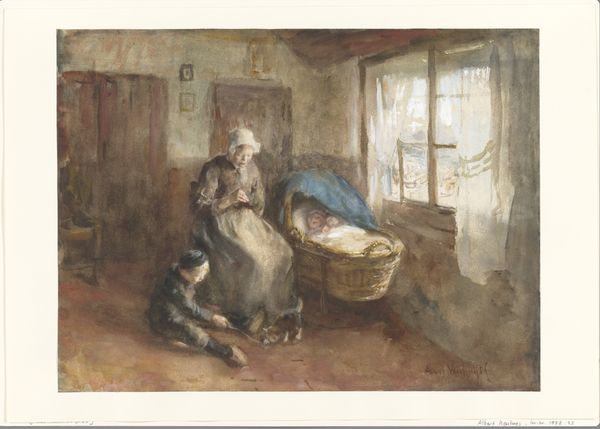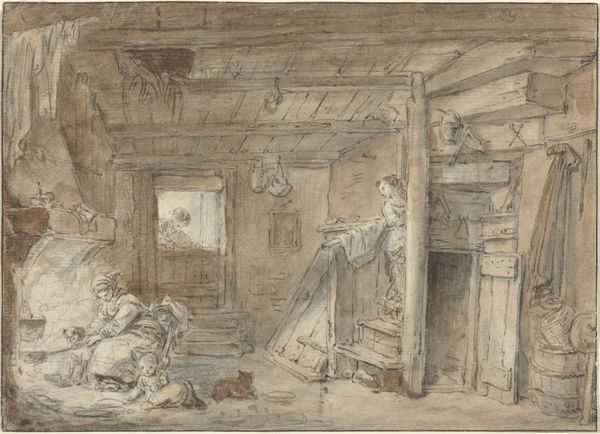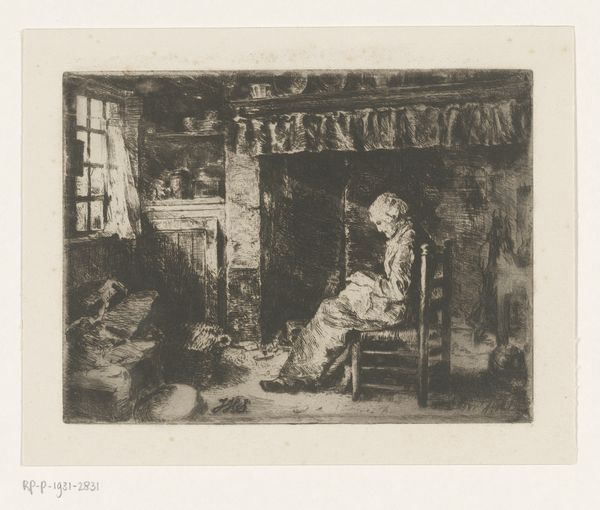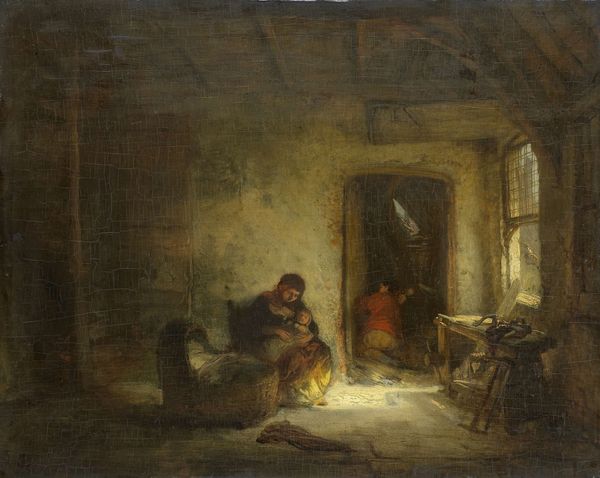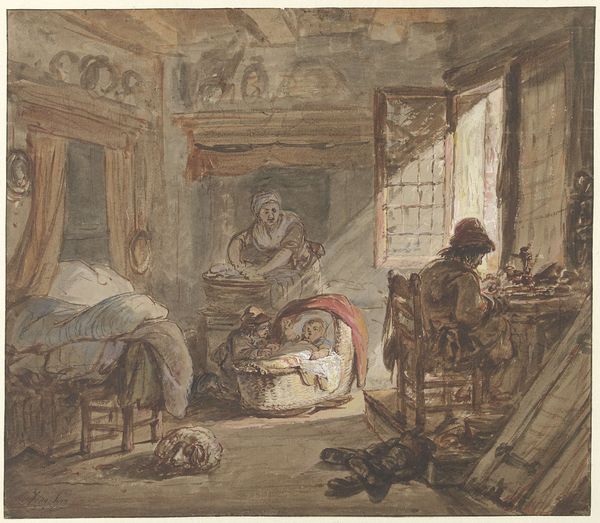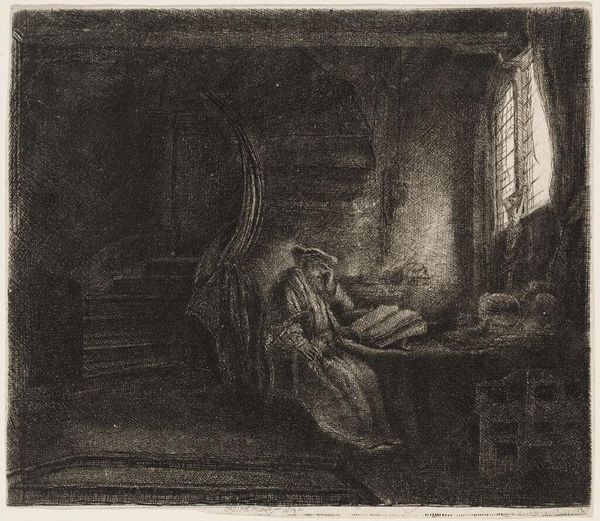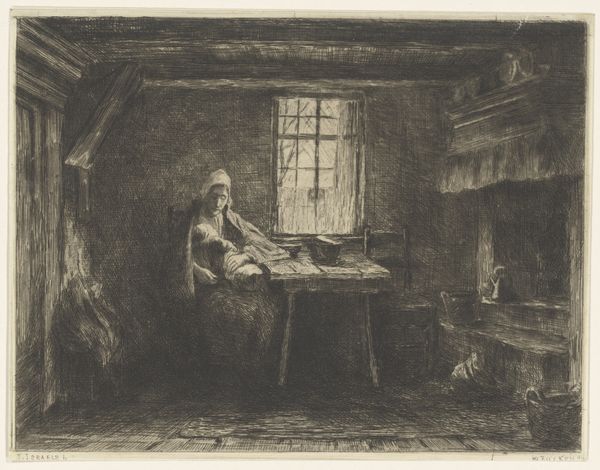
drawing, paper, ink, charcoal
#
portrait
#
drawing
#
charcoal drawing
#
paper
#
ink
#
intimism
#
genre-painting
#
charcoal
#
charcoal
#
watercolor
#
realism
Dimensions: height 330 mm, width 495 mm
Copyright: Rijks Museum: Open Domain
Curator: Jozef Israëls' work, dating between 1834 and 1911, is aptly named "Alleen op de wereld," which translates to "Alone in the World." It's currently housed here at the Rijksmuseum. Editor: Immediately, a sense of stark solitude strikes me. The palette is restrained—primarily charcoals and muted colors—creating an atmosphere of palpable melancholy. The composition is simple, but deeply moving. Curator: Indeed. Israëls was a master of Realism, frequently portraying the lives of the impoverished with a directness and honesty that was both admired and criticized in his time. He used genre paintings like this to bring to light what many would have preferred to ignore. This drawing, rendered with charcoal and ink on paper, typifies that approach. Editor: Looking closer, I’m struck by how the formal qualities amplify this feeling of loneliness. Notice the light falling harshly through the window, dividing the scene almost surgically. Then there's the way the artist renders the woman herself; head bowed, her form almost blending into the somber colors of the room, reinforcing a lack of agency and profound isolation. Curator: Absolutely. Israëls was associated with the Hague School, and he uses their favored subject of peasant life to expose harsh socio-economic conditions. Intimism plays a huge role as well. The viewer becomes a sort of intruder, passively witnessing an unguarded, intensely personal moment. Editor: I'd agree with that assessment. He is deliberately making use of the light source, positioned to the top left of the subject in question. That particular technique immediately conveys the tone of a narrative by its stark chiaroscuro effect—making a formal statement, almost as if highlighting one specific direction. What this might symbolize as a formal characteristic would speak more of its intimate details. Curator: I think your close read brings an insightful, relevant and acute level of meaning. That chiaroscuro also underlines the fact of a grim reality, where light struggles to penetrate the gloom, much like hope in a life filled with hardship. He presents her internal state through the very architecture of the drawing itself, a reflection of society's structures onto individual experience. Editor: Ultimately, looking at "Alone in the World," I can’t help but consider the artist’s intent – that such raw emotion on display must serve some didactic purpose. It remains powerfully resonant today as a case study of individual tragedy writ large across history and humanity. Curator: Yes, reflecting on the broader scope here at the museum, what lingers most is his empathy toward human vulnerability under socioeconomic pressure—a subtle, important note against an often too grandiose score.
Comments
No comments
Be the first to comment and join the conversation on the ultimate creative platform.
